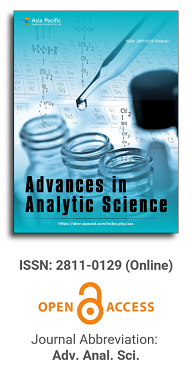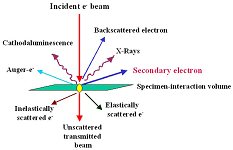
Asia Pacific Academy of Science Pte. Ltd. (APACSCI) specializes in international journal publishing. APACSCI adopts the open access publishing model and provides an important communication bridge for academic groups whose interest fields include engineering, technology, medicine, computer, mathematics, agriculture and forestry, and environment.

Quantification of four sulfonamide residues in prawns using ultrasound-assisted matrix solid-phase dispersive extraction coupled with pre-column derivatization and high-performance liquid chromatography with fluorescence detection
Vol 5, Issue 1, 2024
Download PDF
Abstract
Objective: To develop a method for the simultaneous detection of four sulfonamide residues in prawns—sulfadiazine, sulfathiazole, sulfamerazine, and sulfamethazine—using ultrasound-assisted matrix solid-phase dispersion extraction combined with pre-column derivatization and high-performance liquid chromatography (HPLC). Methods: By optimizing extraction conditions, ethyl acetate was chosen as the extraction solvent and florisil as the solid dispersion agent. Sulfonamides were extracted from prawns using ultrasound-assisted matrix solid-phase dispersion, then derivatized with fluorescamine and analyzed by HPLC with fluorescence detection. Results: The sulfonamides exhibited excellent linearity within the concentration range of 2–100 μg/L, with correlation coefficients greater than 0.999. Detection limits were 0.5 μg/kg and quantification limits were 2 μg/kg. Spike recoveries for blank prawn samples ranged from 84.4% to 93.9% at 2 and 20 μg/kg, with relative standard deviations (n = 3) below 7.7%. Conclusion: The method is straightforward, efficient, and highly precise, meeting the standards for residue analysis.
Keywords
References
- Zeng Z. Veterinary medicine manual. Version 2. Beijing: Chemical Industry Press; 2012. pp. 101-111.
- Li J, Qiu Y, Wang C. Veterinary drug residue analysis. Shanghai: Shanghai Science and Technology Press; 2002. p. 232.
- Zhang C, Wang M, Ren L, et al. Research Progress on metabolism and residues of sulfa drugs in aquatic animals. Qilu fisheries. 2008; 25(10): 59-61.
- Zhang J. Veterinary drug residue monitoring and animal food safety and hygiene. Chinese Journal of veterinary medicine. 2001; 35(4): 60-61.
- Lin W. National regulations on pesticide and veterinary drug residues in food. Dalian: Dalian Maritime publishing house; 2001. p. 1309.
- Ministry of Agriculture of the People’s Republic of China. Maximum residue limits of veterinary drugs in foods of animal origin: announcement of the Ministry of agriculture of the people’s Republic of China No. 235 appendix 2. Ministry of Agriculture of the People’s Republic of China.
- Barker SA, Long AR, Short CR. Isolation of drug residues from tissues by solid phase dispersion. J Chromatogr A. 1989; 475(2): 353-361.
- Yin Y, Zheng G, Zhu X, et al. Rapid determination of fish by dispersive solid phase extraction/gas chromatography mass spectrometry. 16 polycyclic aromatic hydrocarbons in shrimp. Journal of analysis and testing. 2011; 30(10): 1107-1112.
- Yin Y, Zhu X, Zheng G, et al. Application of matrix solid phase dispersion and solid phase extraction in the determination of diethylstilbestrol residues in aquatic products. Analytical testing technology and instruments. 2011; 17(4): 211-216.
- Wu S, Chen K, Dai X, et al. Determination of chlorophenylguanidine residues in aquatic products by dispersive solid phase extraction/high performance liquid chromatography. Journal of analysis and testing. 2011; 30(12): 1356-1361.
- Kishida K, Furusawa N. Matrix solid-phase dispersion extrac-tion and high-performance liquid chromatographic determination of residual sulfonamides in chicken. J Chromatogr A. 2001; 937(1-2): 49-55.
- Zhao D, Liu X, Shi W, et al. Determination of Cypermethrin Residues in Crucian Carp Tissues by MSPD/GC-ECD. Chromatographia. 2011; 73(9-10): 1021-1025. doi: 10.1007/s10337-011-1921-x
- Guo M, Li Z, Tan Z, et al. Determination of eight penicillin residues in aquatic products by dispersive solid phase extraction/Liquid chromatography tandem mass spectrometry. Journal of analysis and testing. 2011; 30(9): 969-975.
- Nuria PN, Ester GI, Angel M, et al. Development of a group-specific immunoassay for sulfonamides application to bee honey anal-ysis. Talanta. 2006; 71(2): 923-933.
- Reeves VB. Confirmation of multiple sulfonamide residues in bovine milk by gas chromatography-positive chemical ionization mass spec-trometry. J Chromatogr B. 1999; 723(1-2): 127-137.
- Chen Z, Zhan C, Guo P, et al. Study on Simultaneous Determination of 13 Sulfonamides Residues in aquatic products by high performance liquid chromatography. Food science. 2007; 28(10): 448-451.
- Zhang Y, Wu Y. Determination of sulfonamides residues in animal meat tissues by solid phase extraction high performance liquid chromatography. Chromatography. 2005; 23(6): 636-638.
- Cai Z, Zhang Y, Pan H, et al. Simultaneous determination of 24 sulfonamide residues in meat by ultra-performance liquid chromatography tandem mass spectrometry. Journal of Chromatography A. 2008; 1200(2): 144-155. doi: 10.1016/j.chroma.2008.05.095
- Fuh MR, Chu SY. Quantitative determination of sulfonamide in meat by solid-phase extraction and capillary electrophoresis. Anal Chim Acta. 2003; 499(1-2): 215-221.
- Zuo Y, Sun H, Wei L. Determination of sulfonamides residues in soil and sediment by rapid solvent extraction capillary electrophoresis. Analytical laboratory. 2012; 31(2): 62-66.
- Ministry of Agriculture of the People’s Republic of China. Determination of sulfonamides residues in aquatic products by liquid chromatography: Announcement No. 958 of the Ministry of agriculture of the people’s Republic of China-12-2007. Ministry of Agriculture of the People’s Republic of China.
- Li Z. Aquatic product chemistry. Beijing: Chemical Industry Press; 2007. pp. 29-31.
Supporting Agencies
Copyright (c) 2024 Jin Xie, Hongfeng Zhang, Guoyuan Hu, Rongfei Pen, Xiaoyan Luo, Xinhong Pan, Hong Yu

This work is licensed under a Creative Commons Attribution 4.0 International License.

This site is licensed under a Creative Commons Attribution 4.0 International License (CC BY 4.0).
1.jpg)
Prof. Sivanesan Subramanian
Anna University, India





.jpg)
